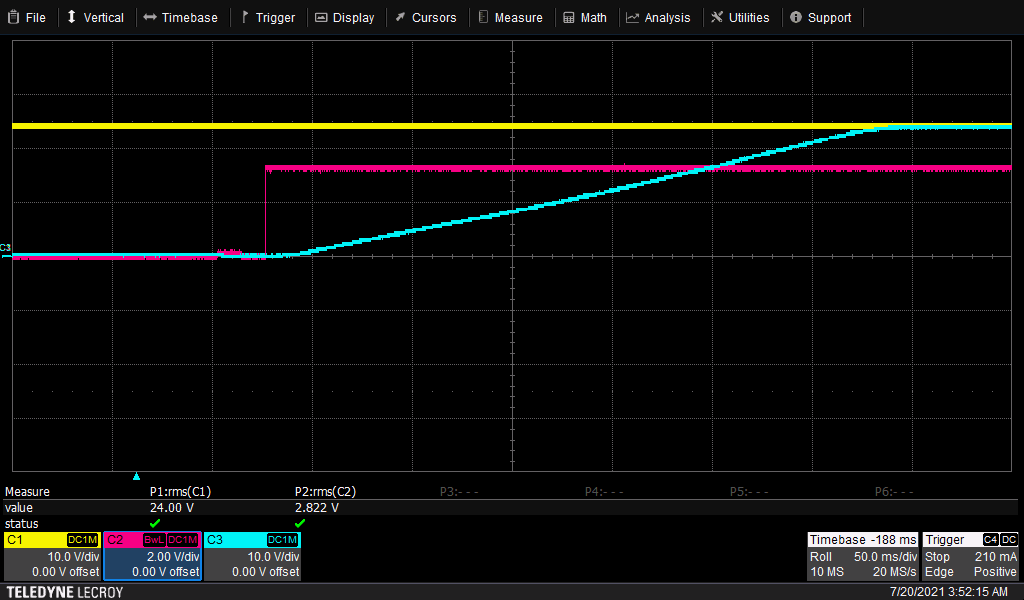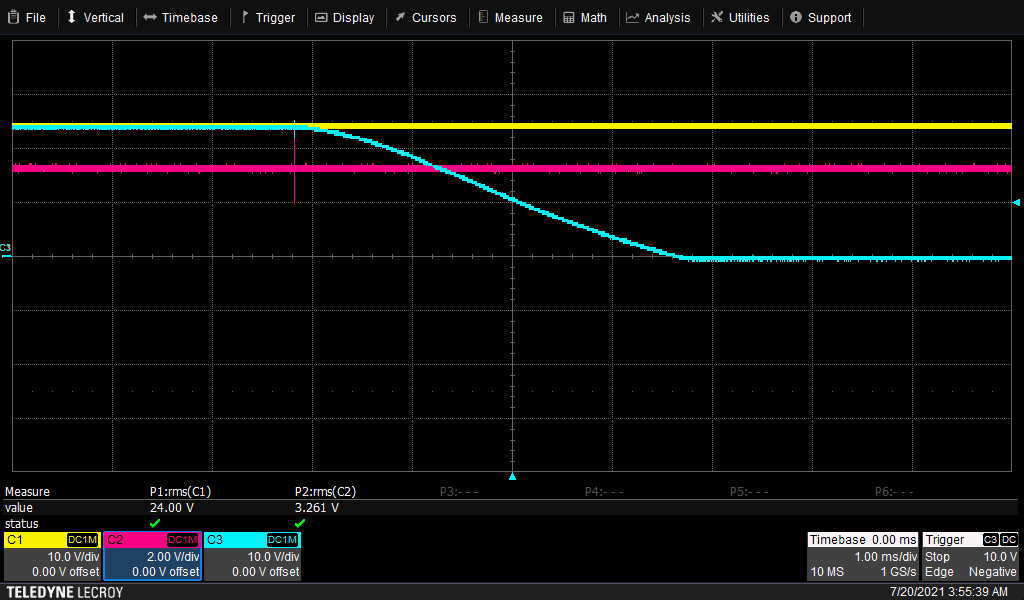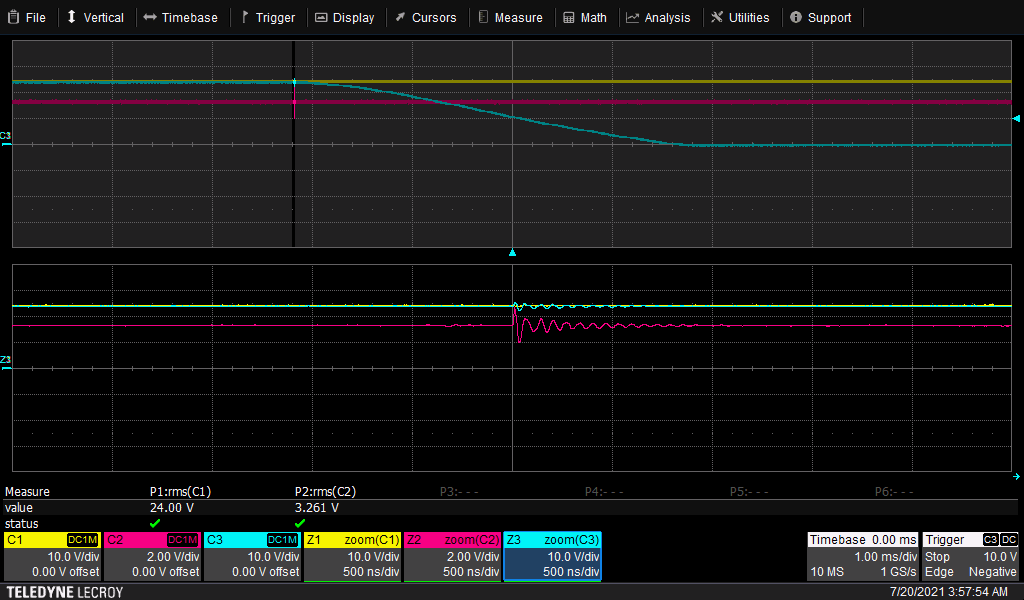We have a product in production using TPS7A4701RGWR with 24V input, and configured with feedback resistors to have a 24V output. The device is mainly used as a protection in case of short circuit in the output. The enable pin is used to activate/deactivate the output.
On our first production batch, we have several boards that are not working as expected: when the enable pin is high, the output voltage is 24V as expected, but as soon as a load is connected (even low, for exemple 100 Ohm), the output voltage drops to almost 0V. When the load is removed, the voltage goes back to 24V.
The reference design has been implemented. The layout guidelines have been followed. Input capacitor is a ceramic 50V 10uF X7R. Output capacitors are a ceramic 50V 10uF X7R + an electrolytic 10uF 50V capacitor.
I suspect that the TPS7A4701RGWR has been damaged by ESD at some point during production/assembly/packing/unpacking. Would you expect ESD to produce such kind of issues?
Would you see any other reasons that could cause damage on the device and such behaviour?
Simon




